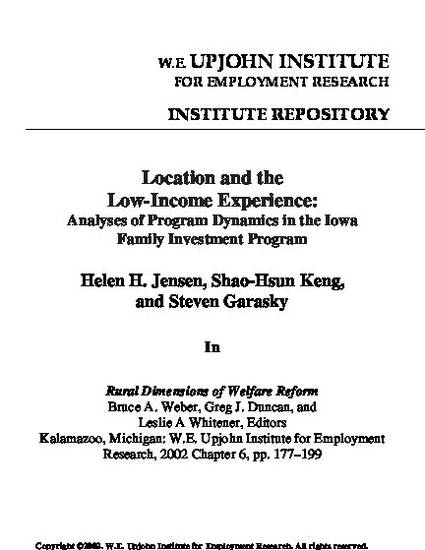
In 1993, the state of Iowa, through waivers, implemented reforms creating the Family Investment Program (FIP), a program similar to the Temporary Assistance for Needy Families (TANF) created under the Personal Responsibility and Work Opportunity Reconciliation Act (PRWORA). The goals of FIP (helping program recipients leave poverty and become self-supporting) parallel the intent of TANF and PRWORA (Holcomb et al. 1998; Iowa Department of Human Services 1996). FIP merged and coordinated several existing programs and tied support for job training, education, child care, and transportation more directly to income transfers. Iowa has had to change FIP very little to meet current federal guidelines. Thus, Iowa provides over seven years of experience under a program with rules and incentives similar to those instituted nationwide in 1996.
Available at: http://works.bepress.com/helen-jensen/171/

This is a chapter from Rural Dimensions of Welfare Reform (2002): 177. Posted with permission.